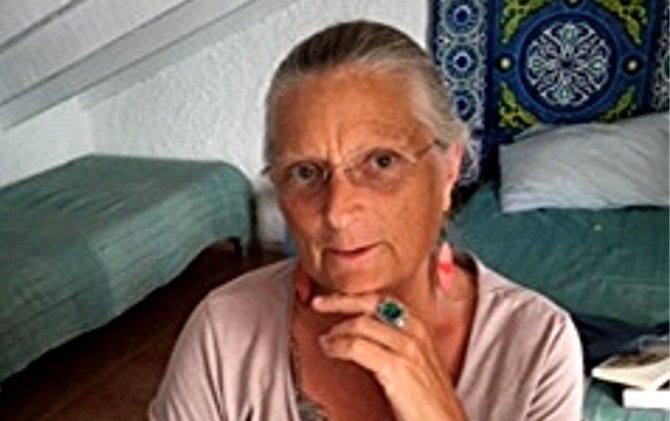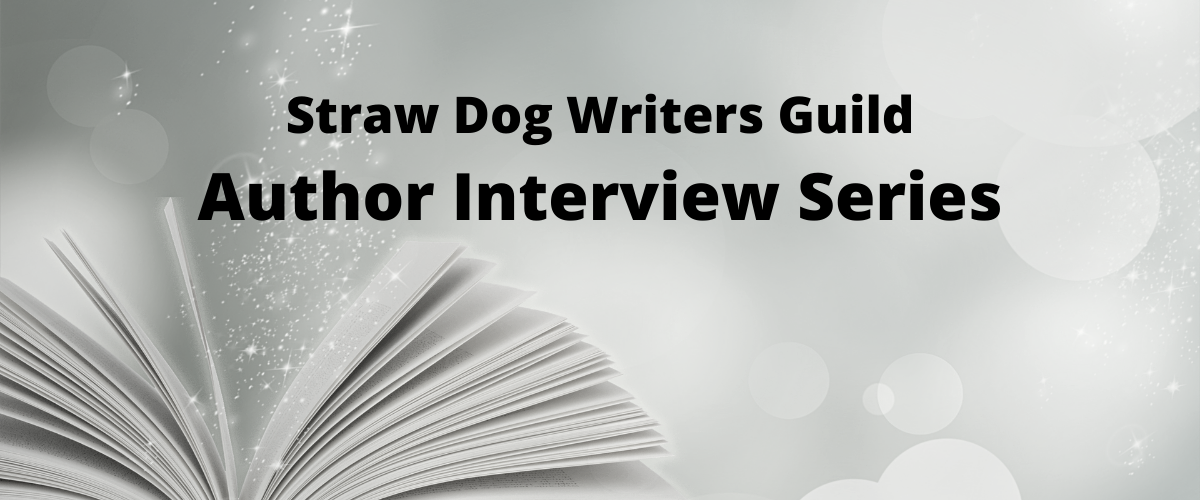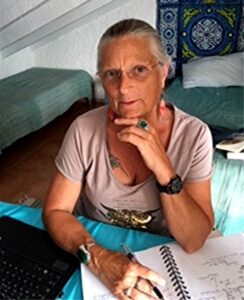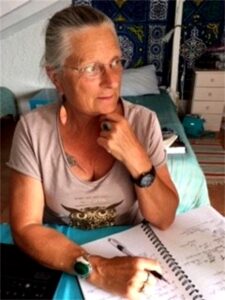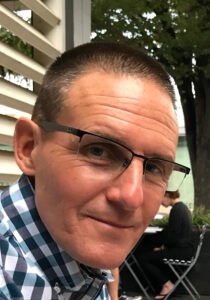Suzanne Rancourt is a poet, a writer of fiction and creative non-fiction, photographer, and musical artist. As a woman of Native American and European ancestry who grew up in rural Maine, and as a Marine Corps and Army veteran, she has combined her heritage, her arts, and her experiences as a survivor into a therapeutic practice which uses art and ceremony to treat those suffering from Traumatic Brain Injury and PTSD. Suzanne is the author of the poetry collections Old Stones, New Roads (Main Street Rag Press, 2021), murmurs at the gate (Unsolicited Press, 2019), and Billboards in the Clouds (2nd print – Northwestern University Press, 1st print by Curbstone Press, 2004), which was the winner of the Native Writers’ Circle of the Americas First Book Award. Her poetry, fiction, nonfiction, and photography has appeared in dozens of journals and reviews, as well as several anthologies. Her work focuses on nature, memory, family relationships, marginalized cultures and communities, and healing from physical, emotional, and spiritual injury.
SDWG: Even though much of your poetry and prose takes printed form, you’ve said that you lean on and return to oral traditions of story and poem in your work. Can you describe for us how and why oral traditions serve as a wellspring for you, and perhaps focus a little on your interest in the power of sound in the healing process?
SR: Before there was massive over-inundation of social media, electronic gadgetry, and assorted devices, there was simply human to human communication. There was the art of telling the story, whether in Ceremony of one’s return from war, hunting, or migratory exploits or events that occurred in one’s daily living. And there were also stories just to keep people connected through long dark nights. With the Ritual of telling comes the Ritual of listening, hearing, and bearing Witness. I have amazing memories of my Dad, his Dad and other wonderful Maine “ole timahs” telling stories. The tone and rhythms of speech, unique use of syntax, the tempo, tension, and tone in each spoken line, held suspended in air with just the right length and placement of pause – all an art derived from the emotions of that which is being retold. This is powerful. No device or gadget can replicate this. The relationship between the Teller and Witness is presence, human to human presence. These traditions hail from Bardic, Celtic, and Original Tribal Peoples globally, and yet contemporary western culture and society is just rediscovering the significant healing power of the oral telling of one’s experience. Decades ago, before there was neuroscience as we know it today, there were some studies conducted of early childhood development that discovered that no matter where one goes on the planet, a lullaby always has elongated, low tone vowel sounds. Now, I find that intriguing. Combine that knowledge with the contemporary research of Dr. Stephen Porgas and his Polyvagal Theory and we have ancient traditions that have surpassed contemporary trauma treatment modalities. Here’s how: The Vagus nerve is not only the longest nerve in the human body, it also connects with the oldest part of our brains, the “reptilian” brain which controls all of our involuntary functions including sight, hearing, smell, respiration, heart rate, visceral or gut reactions, sphincter reactions, all known as fight, flight, or freeze. When we are orating, we are technically engaged in a self-soothing behavior from the inside out. Topic matter of course plays a significant role in this as well.
For the treatment of PTSD or other trauma events, there are therapies that involve a certified and skilled professional to bear witness to the telling of one’s trauma event. One such method is referred to as Prolonged Exposure Therapy which requires a competent, and skilled therapist to facilitate responsibly. The point is that whether singing of various experiences, or orally telling of those experiences, when done in a safe and respectful manner, significant cultural, life, and personal events are recorded, witnessed, and, as the individual is heard and healed, the potential for the community to heal collectively is also an option.
SDWG: I understand that both writing and reading can be healing acts, and therefore we can consider them ceremonial in nature. You’ve used the phrase “awakened resonating entrainment” as a way of describing the elevated state of awareness that can result from such acts. Would you elaborate on the connection between literary acts and other ceremonial ones? How do our powers of memory figure into these acts?
SR: Let me share a couple of definitions to make sure we’re on the same page.
From a science / physics perspective: Resonance is “…the reinforcement or prolongation of sound by reflection from a surface or by the synchronous vibration of a neighboring object.” Also, sympathetic resonance, or sympathetic vibration, is “a harmonic phenomenon wherein a formerly passive string or vibratory body responds to external vibrations to which it has a harmonic likeness.” Phrases like, “I can relate,” or “I sympathize with you,” are a type of behavioral resonance.
From a craft perspective, I want to employ my syntax in a way that allows the reader to resonate with my narrator, story, and experience. Reading aloud is an auditory experience. It is vibrational and harmonic for the orator and the audience. When the experience moves outside of the orator to stimulate a change in the audience, this is where I use the term entrainment, which comes from physics and is “the process whereby two interacting oscillating systems assume the same period.” This relational phenomenon has been described as synchronicity, and “an odd sympathy.” For example: an orator is reciting a poem, or saga, the storyteller sets the stage, the vibration, a calibratory action is a means to an end, the end being a changed audience, listener, or people.
In many Tribal cultures, this is Ceremony. The Ritual includes the understanding that words and actions have power to create or destroy. There is great responsibility in this type of Ritual and Ceremony because we are deliberately using our artmaking crafts to awaken, via resonance, the images, smells, and sensations to which one has attached emotions. Memories are awakened. This is how we bring people into our stories. Because my work often addresses trauma, I am keenly aware of my audience. This is the main reason that when I do a reading, I take the time to visually connect with the audience (as best as I can) between each piece that I read or I tell completely unrelated stories between each piece. I follow my gut.
SDWG: You also pay homage to traditional stories with the presence of “Elders” who often appear in your work. I’m thinking of the personal narrative “Full Bird at Red Clay”, or the poem “Harvesting the Spring” as examples. Of course, Elders are archetypal characters in traditional stories across many cultures. How do you define and employ the Elders who appear in your poems and stories? What do they have in common? Even though this archetype is an ancient one, what do these characters in their contemporary forms offer to your reader?
SR: When I sit down to write, I simply allow the characters, metaphors, and memories to emerge, so I can’t say that I sit down with a specific Elder in mind. They just appear in the work and some want to speak more than others. This is an organic style of creative process. The natural world is always an inspiration as are international airports or a local coffee house or taverna. When I think of an Elder, I see someone who has acquired wisdom through life’s experiences. Sometimes an Elder is stereotypically aged, but not always. Not all people are able to transmute life experiences into wisdom that can be applied to one’s everyday life. When Elders present themselves in my writing, I listen and let them speak.
The archetypical Elder is the pivot point in a piece of writing that has the power to ratchet up the metaphor’s tension. They offer the reader (and me as well) an opportunity to have an “Ah-ha!” moment, an enlightenment of some kind. Both “Full Bird at Red Clay”, which is creative prose, and “Harvesting the Spring” which is poetry, are also non-fiction. Those are true events as I remember them. The gift of craft is one’s ability to allow the remembering to emerge fully and in a manner that recaptures all the tonal and sensorial qualities of the experience. Each character offers a particular type of strength as it manifests in the various characters; each offering various cultural perspectives at different phases of life.
SDWG: In “Harvesting the Spring”, which also seems to be a memory piece, there’s a wonderful recurring image of feet in connection with the earth – first through the image of the draft horse Danny, whose hooves become immobilized in the Spring mud, and then in the image of the narrator as a child, who wanders barefoot in her backyard, searching for a melted spot in the disappearing snow so she can feel the earth with her feet. I was hoping you might respond to the symbolic and metaphoric gestures of these scenes.
SR: My Grampa always said that he let Danny soak in that mint-infused mud because it was good for his hooves and legs. It was healing, especially after a long day of twitchin’ logs in the backwoods of Maine. There is healing in sinking our own human feet into the Earth, both physically and metaphorically. There is literal grounding taking place, and if one is the least bit sensitive to life, then you can feel this through your feet. Try it sometime. As a child, I gravitated toward these Rituals naturally, as most children do, or would if allowed. If you are someone who loves the winter, and is outdoors often through all the seasons, then you learn about the subtleties of smells, the feel of air on your flesh, different sounds due to rising temperatures, the earth tilting and rotational angles reflecting the incoming new season. This isn’t imagination. This is science, and whether or not one is in a relationship with the natural world and is close enough to receive these seasonal conversations. Perhaps Ritual is our way of answering back or entering into the conversation with gratitude that we survived winter and are ready for new life.
SDWG: As someone with both Native American and European ancestors, and as an artist, a healer, and a veteran, can you help me understand the difference between a soldier and a warrior?
SR: Not all soldiers are connected to integrity. Not all warriors follow orders. Not all soldiers will die trying. Not all warriors know when to quit. Not all soldiering is a vocation. Not all warrior-ing is just a job. Not everyone is called to service. Not everyone is called to serve.
I would also like to say that all of my Ancestors are people close to the Natural World and were people called to defend and protect those or that which could not do so for themselves or itself. I honor all of my Ancestors to the best of my human ability.
SDWG: You’ve spoken (and written) about the influence that Pat Schneider and the AWA (Amherst Writers & Artists) has had on your writing and your practice. Can you briefly describe Pat’s work and how it changed yours?
SR: The late Pat Schneider was a friend and savior in many ways. She had the courage to break molds and academic categories designed to keep specific genders and classes of people trapped. She stayed true to herself and to her brother and never forgot where she came from in rural, seriously impoverished Appalachia. I grew up in Temple, Maine in the ‘50’s and ‘60’s, so Pat and I shared quite a few similarities as children. Pat, and her late husband Peter, just helped me tremendously with their kindness, wisdom, and opening their home to these amazing AWA workshops. Through scholarships I was able to attend and receive AWA training to become an AWA affiliate, qualified to facilitate AWA style writing workshops. I also attended other AWA style writing weekends led by other AWA affiliates.
The philosophy, methodology, and application of the tools were nothing like what standard western academia was teaching, and of course, it made perfect sense. One of the main reasons why I acquired numerous degrees, certificates, advanced graduate training etc., is because there weren’t fields of study or professional occupations such as Expressive Arts Therapy (EXAT) in existence at that time. Pat’s courage, drive, and stunning gift for writing and facilitating these amazing groups in a mindful and trauma-sensitive manner allowed me to heal while cultivating my own skills. I did not have to exclude my childhood or my culture, or how or where I was born and raised. Instead, writing has asked and asks of me to embrace every part; to become better, stronger, more whole. This isn’t just being a competent teacher, this is being a mentor, AKA Elder.
SDWG: Poetry and prose are only part of your artistic life. You’ve noted how your work as a photographer and musician informs your writing like “crossfit training”, which activates different creative pathways or “muscles”. While many aspects of these practices are obviously different, I’d like to know more about what you think they share or how they overlap.
SR: Each one of our senses is processed through a specific brain center designated to that sense. I think of our brain as a hard drive with an operating system, program folders, and files. To get to various files, commands are given. For example, a smell detected sets off a signal from the outside that eventually makes it back to the “folder” or brain center that categorizes smell files, where, hopefully, the smell is recognized and then appropriate action can be taken in response to the smell. Some fields of study may refer to how our brains respond in this type of scenario as neuroplasticity and reverse access pathways. Maybe it’s my “Mainiacness” but I tend to equate this phenomenon with jump starting a vehicle by popping the clutch.
Every time we employ one of our many senses, we are sending signals along numerous pathways. If we only use one art-making modality, we are limiting the pathways accessed by not using them. If we only use one light switch in the house, it will wear out, perhaps, sooner than others. If we only exercise our larger muscle groups, then we limit muscular efficiency by not including exercises that employ the smaller muscle groups, and the connective tissues that literally hold us together. Crossfit training, for me, applies to varying not just my physical exercise, but my mental and spiritual exercise as well. There is the type of bodybuilding that can occur in the gym and the type that occurs via daily working, say, working in the woods or physical work on a farm. I’ll always bet on the strength of the practical, applied strengths as opposed to the gym. Everyday living, for me, includes my attempts to pay attention, employ my senses, while trying to be mindful and a halfway decent human.
SDWG: In our earlier conversation we were discussing the power of nature, and you said that being present with nature makes us realize that “…absolutely everything we have comes from nature,“ and this awareness challenges us to “honor the fact that ‘not pleasing’ does not mean ‘not essential’.” How can we meet this challenge and honor this fact? What happens when we do so, or do not?
SR: From a physics perspective, what is mass? Simplified definition: mass is the “…property of a physical body…” I find it fascinating that in indigenous cultures, the Earth is a feminine being referred to as Mother Earth. Mother, as in the Latin – Mater. Mother, Mater, mass – that which gives physical form, shape, weight, substance, and body; not just human, but everything in our environment that we call Earth, our physical existence. Through this shared Mother, Mater, or mass we are all related, all connected. Whether one likes that thought or not, we are all of the same Mother.
Indigenous cultures also know that we all share the same Father, or Breath, or origin spirit. The sun, for example, is often aligned with this Father concept. It is the Mother, however, that sacrifices the physical body to birth, bearing physical form and shape. Thus, all truth is found in Nature, whether we like that or not. We are all related. In most indigenous cultures there is a phrase: “All My Relations”, that acknowledges not just humans or animals, but everything in the natural world. We all have physical mass, and technically, everything has a vibration, literally (science again), as in electrons, valences etc. This truth allows us to simply “be” when we are in nature and receive the benefits of the natural world.
Regardless of the environment that one finds themselves living in, everything of mass comes from the Earth. L.A., Manhattan, Portland, everything in these places still comes from the Earth, and the air and the sun remain present. We can begin to reintegrate ourselves into the natural world by simply stepping outside. We can also begin to reintegrate with the land we are inhabiting by acknowledging All Our Relations that once inhabited the land, those who do now, and those who will in the future. This is called Land Acknowledgement; being aware of those who have resided on a given area of land before ourselves. It doesn’t take much action to change everything. The end result for me and many folks is a greater sense of calm and belonging. This leads to a more stable social organism, community, culture, even nation. Perhaps.
SDWG: What has you inspired or motivated right now? What are you working on? What events, publications, and projects are upcoming for you?
SR: Being alive inspires me! Keeping it that way is what motivates me! But seriously, life does inspire me, even the angst of political blah blah. This layer of existence motivates me to speak through my writing even more, to participate in interviews even more. To get out there and share, by facilitating writing workshops or other art modalities that I express myself through. I am motivated to be on my land more, and to always give thanks for every step I am able to experience while walking this Earth. In October I’m leading an AWA Professional Development workshop addressing Land Acknowledgement. I am also one of the poets participating in a “Nature Cultures – Writing the Land” Project Authors reading.
I recently spent several days on the Downeast Salmon Federation’s land preserve outside of Addison Maine, literally on the West Branch of the Narraguagus River. In December I am the featured reader for CAPS (Calling All Poets Series.) In January 2022 I will be a guest faculty at the Solstice MFA in Writing Program. By March, I and other Adirondack Mountain Club members will be ready for my Plant Identification presentation. And, then, well, I’ll be working with the current editor of my fourth manuscript, which I recently signed the contract for, and getting that squared away for an Autumn 2023 release. Do I have a fifth manuscript in the works? Of course!
Access and Contact:
Expressive Arts.com – Suzanne’s website including her events page
Nature – Culture, including events and the Writing the Land Project
Calling All Poets, including Reading Calendar
Terrain Magazine: Two Poems by Suzanne Rancourt
Pat Schneider’s book Writing Alone and With Others
**********************************************************
Interviewer: Mark Luebbers, Straw Dog Writers Guild member
Mark Luebbers is a teacher and writer living in Greenfield, Massachusetts. His work focuses on nature and the environment, the lives of eccentric and creative figures from history, and living in America. Mark has published poems in a number of journals and magazines in recent years, including The American Journal of Poetry, The Journal of Americana, Wayfarer Magazine, Apple Valley Review, Blue Line, and The Hopper. In 2018, Mark was nominated for two Pushcart Prizes. “Flat Light”, his first collection, was published in 2020 by Urban Farmhouse Press. “Citizens of Ordinary Time”, a collection of biographical and ekphrastic poems written in collaboration with Ben Goluboff, is forthcoming, also from UFP.
